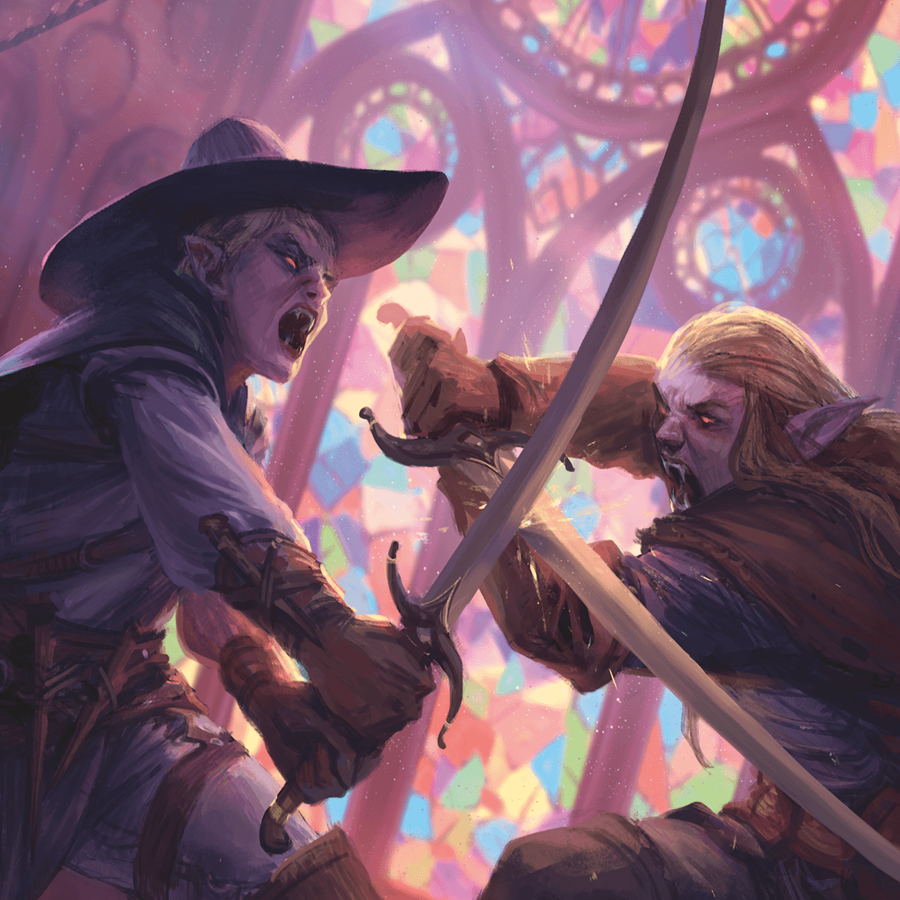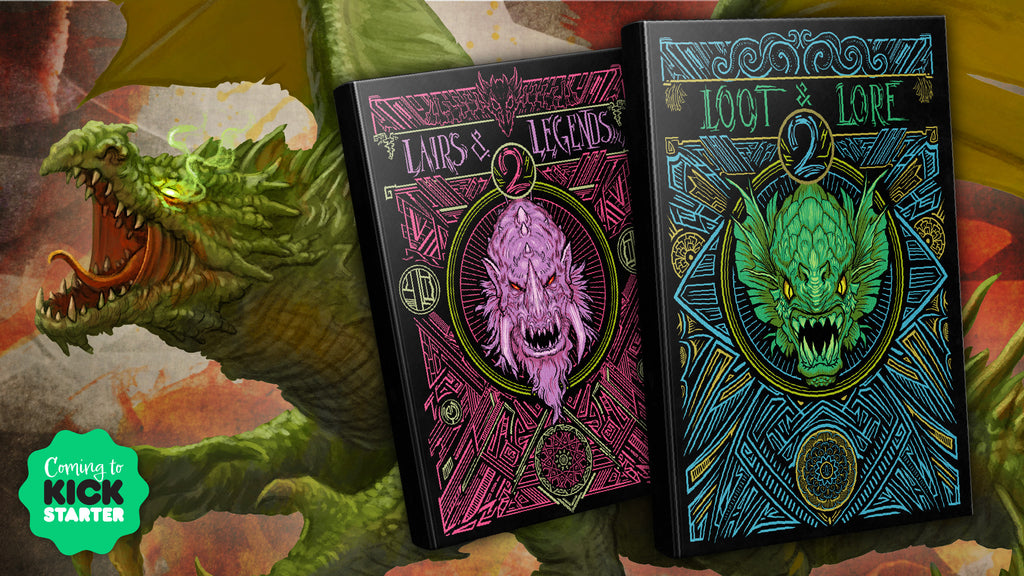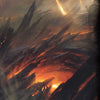How to Prep a Pre-written D&D Adventure in Under 1 Hour!

By Luke Hart
Preparing a pre-written D&D adventure for your group may seem daunting. Where do you even begin? Do you just read the adventure, take a few notes, and hope for the best?
The good news is I’ve developed a simple 10-step system to prepare pre-written adventures and have used it successfully for some time now with my groups. Yes, I usually homebrew my adventures, but when I was running Curse of Strahd, Dragon Heist, Dungeon of the Mad Mage, and bits and pieces from other pre-written adventures, this is the methodology that often allowed me to prep an entire adventure in about an hour or two. That one full-length adventure would often last two to three game sessions.
First, let’s talk about how to prepare one single adventure. This will be perfect if you’re running stand-alone adventures from an anthology like Lairs & Legends or Tales from the Yawning Portal.
Then we’ll go over how to prepare an entire adventure module, which is a series of adventures designed to form a cohesive campaign lasting from, say, levels 3 to 12. This will give you guidance on running modules like Into the Fey or Dungeon of the Mad Mage.
By the way, running awesome games with in-depth lore, deadly traps, and terrifying monsters doesn’t have to take hours of prep! Lairs & Legends 2 and Loot & Lore 2 have everything you need! Hand-crafted by a team of professional game masters to make it as easy to use as possible, they are an anthology of game master resources to fuel you for years to come.
Watch or listen to this article by clicking the video below.
Guiding Stars
First, I want to emphasize that nothing is sacred in a pre-written adventure. As a game master, I encourage you to customize the crap out of any adventure you decide to run for your group. Remember, fun is the goal of any game of D&D, Pathfinder, or whatever. Do not let a pre-written adventure confine you in any way. An adventure is just a guideline designed to reduce some of your workload; it’s not a set of ironclad rules and imperatives. Now, on to the 10-step method for prepping a pre-written D&D adventure!
#1 Overview Prep
The first thing you should do is read the overview or background information for an adventure. This is to be familiar with it, of course, but this is where you’ll first start making changes to the adventure.
Consider things such as how you should change the background to better suit your campaign setting. If the adventure was designed for a generic city or someplace in the Forgotten Realms, but you run your games in Eberron, where should the adventure take place instead?
You’ll also want to tweak the background to suit the taste of you and your players. Or, if you’re dragging and dropping this adventure into an ongoing campaign, you’ll probably want to change some things to better fit with events that have already taken place.
#2 Plot Hook Prep
Next, review the plot hooks provided by the adventure and adjust them as needed to appeal to your players and fit in with your campaign. This is a great opportunity to consider if you can tie in a character backstory via a plot hook. Doing so will instantly get loads of player enthusiasm and buy-in, making it far less likely that the group will ignore that adventure and move on to something different.
Furthermore, review the plot hook to make sure it satisfies all the requirements of a good plot hook. To list them succinctly,
- provide proper motivation to do the thing,
- be clear about what the characters need to do, and
- give the characters clear direction on where they should go to get started.
If you want to learn more about creating good plot hooks, check out my video on that topic here.
#3 Adventure Body Prep
The third step to prepping a pre-written adventure is digging into the actual meat of the adventure, and these are the area descriptions. These parts of the adventure describe what’s in all the various rooms of the dungeon or castle or wherever the adventure takes place. They are often labeled as T1. Foyer, T2. Guard Room, T3. Audience Hall, and the like.
For this step, you want to read each area and highlight the important parts you don’t want to forget or that you want to be able to quickly find when you’re running the game and referring back to the adventure. This is where printable PDFs really come in handy, but if you’re running an adventure from a company that refuses to sell PDFs, I guess you can always make photocopies as long as they are for personal use only. They may frown on that practice, but dang it, they should sell PDFs. It’s ridiculous not to.
Besides highlighting, you should also make notes of important things as needed. I usually do this in the margin of the page or on the backside. I usually print off adventures on one side of the paper only, as this allows lots of white space on the back to take notes.
Then, you can staple the pages together and have the adventure with your highlighting and notes on the backside in one nice, convenient packet. Some folks like to make notes on 3x5 cards, but I find these hard to keep organized and track of. A packet of pages is much easier, in my opinion.
Now, as you are prepping the adventure body, you will probably be preparing the encounters and the map simultaneously, but we’re going to talk about those as distinct steps in this process because they deserve their own sections.
Great, but what should you highlight or take notes on? Because I know that saying “the important parts” isn’t terribly helpful, is it? These are the things you should consider: important NPC and villain information—such as roleplaying notes—key locations, encounters, puzzles, and traps. Those tend to be some of the more complex parts of running the game, in my opinion.
Next, focus on key points that could impact future events if you forget to include or emphasize them in the game. Keys to open doors or clues to puzzles fall in this category, as do important plot points or critical lore.
Also, you may want to take notes on new rules or unfamiliar ones that you need to look up. Underwater combat is a good example. Write down the page numbers of the source books so you can quickly look things up if you need to.
Now, a big part of prepping the body of an adventure is making adjustments, just like you did with other parts . . . and will continue to do! The adjustments you should make involve crafting the adventure more to suit your and your players’ personal interests and your campaign. For instance, if the adventure is heavy on social interactions, but you have players who love combat, you could tweak for that, adding more combat. Or, if exploration elements are lacking, you can add a few secret doors or mysteries to be discovered.
Part of this adjustment should be increasing or decreasing tension and drama to suit your tastes and perhaps improve pacing. Some pre-written adventures can really drag, and others feel like out-of-control rollercoasters. Also, check if there are any plot holes or other issues that need to be fixed.
Finally, consider adding moments for specific characters to shine, and see if there are any ways you could make slight adjustments to tie in a character backstory.
#4 Encounter Prep
Something you want to pay particular attention to is encounter preparation. Something I’ve noticed with many adventures and modules is that they don’t include much information about encounters. Sure, they tell you the MONSTERS that are present, but that’s about it.
So, you want to think through things like the creatures’ motivations. Why are they there? What are their goals? What do they want? Are they goblins on guard duty with orders to let no one pass? Might they be bribed? Or have they been drinking too much and don’t really care if the characters walk on past them?
This is when you want to review monster stat blocks and determine what their TACTICS will be if a combat breaks out. Remember, not every encounter will be combat, but it’s a possibility that you should be prepared for. You want to consider what each monster is likely to do, which attack they’ll use, which spell they’ll cast, and the like. Also consider how the monsters work together. Do the warriors charge in while the shaman hangs back?
For me, this is a critical step and not only because my players and I love combat. As a dungeon master, I do NOT want to bog my own game down because I’m not familiar with monster stat blocks, looking up spells, and THINKING too much on my turns. As much as possible, I want to prep my monsters and be ready to rock and roll if it comes to that.
Also, ask yourself “how does this encounter advance the story?” Every encounter should have a purpose in the overall narrative and the game. Sometimes, yes, a fight for fight’s sake might work for certain groups. However, encounters with purposes tend to be more fulfilling for players.
Of course, this is the time to adjust the encounters as needed to suit your group and campaign. Adjust for the number of characters in the group and increase or decrease the difficulty. When I ran Curse of Strahd, for instance, the encounters were underwhelmingly weak for my players, so I had to beef them up considerably.
Also, consider making better monster COMBINATIONS. Five goblin warriors could be a boring encounter. But three warriors, two archers, and a shaman will be much more dynamic and interesting. This is a great time to place a monster into the game that you read about and would like to use somewhere. Just make sure you justify it in the narrative.
#5 Treasure Prep
For this step, you review the treasure and loot included with the adventure—gold, magic items, and the like—and evaluate if it should be changed to better suit the group, characters, and the campaign. For instance, you may wish to replace magic items in the adventure with ones you hand-pick for your players’ characters. If no one uses an axe, you might want to take that +1 axe out of the adventure and make it a +1 longsword instead.
#6 Map Prep
Here you want to analyze the map to make sure it suits your purposes and make adjustments as needed. Things to consider are ensuring that the location has more than one entrance, is non-linear, has a variety of elements such as terrain and furniture, and has some secrets that can be discovered.
For more information on everything you should consider for a good location map, see my 10 Things All Dungeon Maps Must Have in D&D video.
The next thing I do is print map the map out for easy reference during the game, and I take some notes on it. In the white margins on the page, I’ll usually write down the name of each room or area—kitchen, barracks, jail cells, etc.—and I’ll write down the number and types of enemies in each room. I’ve found that having that information readily available at glance of the map is super useful.
And then the backside of the map works perfectly for your Quick Reference Sheet, which we’ll get to in just a bit.
#7 Conclusion Prep
Every adventure has a conclusion; this is when events are being wrapped up, the characters receive their rewards, and the like. However, something that you should make sure is integrated into the conclusion of the adventure or in one of the last rooms of the dungeon that gets explored—perhaps something found on the Big Boss or in his private chambers—is a tie-in to the next adventure or a future adventure.
This is you delivering a plot hook to for another adventure to your characters toward the end of the current adventure. Yes, they took down the cambion lieutenant, but they discover a letter form a succubus that he was working with. And it turns out that she has some nasty plans that the characters might want to interfere with. That might be the next adventure your players decide to go on!
#8 Create Quick Reference Sheet
Next up is creating your quick reference sheet, and this usually something I’m doing as I prep the other parts of the adventure. You’re going to find that many of these steps can be done simultaneously, saving you lots of prep time.
I usually make my quick reference sheet on the back of the map, and this is the sort of information I suggest you put on it: Monster names, challenge rating numbers, and the page number and source books where I can find the. Then you should have important names that you want to have handy instead of digging through several adventure pages to find: usually these are the important NPCs, including villains, and locations.
Finally, jot down anything else you think is important to remember when running the adventure. Things such as plot points you don’t want to forget to hit, critical lore you want to reveal, and the plot hook or tie-in that you intend to include toward the end of the adventure.
#9 Pre-Game Review
Now, all the steps I just finished going over usually happen in advance of your actual game session day. Yes, you could do it all the same day, but I prefer to do it in advance so I don’t feel pressured and can enjoy the process. So then on your actual game day, what you should do is simply REVIEW everything to make sure they are fresh in your mind.
This is what I suggest. Read over highlighted portions of the adventure and your notes. Study stat blocks again so you can run your monsters smoothly in combat. In particular at this point I recommend you study up on spells your monsters are going to cast. Go over your quick reference sheet. Then pick out the miniatures you plan to use, prepare physical maps or terrain you might need, and make sure your handouts and props, if any, are squared away.
When I’m running my game, my goal is to refer to my notes or adventure print-offs as little as necessary during the actual game. Every moment I’m looking something up or reading my notes is a moment that the players are waiting for me and not really playing the game. I’ve also found that finding things in the moment can be next to impossible when you’re on the spot. Better to be well prepared than scrambling.
#10 Adventure Module Considerations
Now, if you’re running an entire adventure module and not just one-off adventures, there are a few more steps and things to consider. And you really should do this BEFORE preparing any individual adventure.
First, read the module overview and background. This should be at the beginning of the adventure module and give you a high-level picture of what the overall storyline and plot of the module is. It should tell you about the major villains, their goals, and what is likely to happen over the course of the campaign. This will ground you and allow you to prep and run the adventures better.
It will ALSO get you ready to do some high-level changes to the adventure module. And these are the sort of things you should consider changing. First, do you need to change the setting? Eberron instead of Forgotten Realms, of instance? Do you need to change elements of the overall theme to suit you and your players preferences? Are there portions of the overarching plot that you want to change? Are there factions that you want to switch out for others?
These things are all on the table. However, just bear in mind that changing some of these things will have long-reaching effects on the individual adventures. If you swap out a major villain, you’ll probably have to adjust for that in many of the adventures. If there are themes you want to remove, there will be a trickle-down effect.
Your best bet is to get a pre-written adventure module that mostly suits your needs right out of the box…at a high-level at least. It’s fairly easy to change small things in the individual adventures, but changing campaign-wide elements is going to require a lot more elbow grease.
Now, many people will tell you that you MUST read the ENTIRE adventure module before you start your game, but that’s rubbish. I have NEVER read an entire module first, and we’ve done just fine.
What you do need to do is read the overview, of course, and prepare the first adventure at a minimum. And then what I strongly suggest is that as you’re running the campaign, you keep reading the module. That’s what I did for my Curse of Strahd campaign. I read and prepared enough to get us started, and then as we began playing, I continued reading the module. It didn’t take me too long to finish, and our game wasn’t delayed from starting. However, there is a STRONG benefit to reading the entire module; just don’t feel that you need to do it all before starting the game.
It’s Time for New Legends!
Lairs & Legends 2 and Loot & Lore 2 are the ultimate game master resource! These two massive books put an anthology of everything you need to run amazing games for YEARS at your fingertips.
- Over 30 Adventures
- 30 Stand-Alone Encounters
- More than 100 Monsters
- 6 New Rule Sets
- And much more!
These books are written to make running the game easy for new and veteran GMs. Each resource is built with intuitive formatting, clear wording, and evocative art. You’ll never again have to dig through dense paragraphs to find critical details you need during a live session.
These 5e resources are designed to scale to your needs; whether it’s a quick drag-and-drop trap to add some spice to your session or complete adventures that span levels 1 to 20. The sky’s the limit with what your games can become with Lairs & Legends 2 and Loot & Lore 2.
Get Access to 1000s of Free 5e Resources!
Now, if you're on a budget, we totally understand. That's why we also offer loads of free 5e resources for folks. Just sign up for the DM Lair Newsletter to instantly get access to our entire library of free 5e resources. We'll also send you new resources every week!
-
Posted in
Game Master How-To Articles







